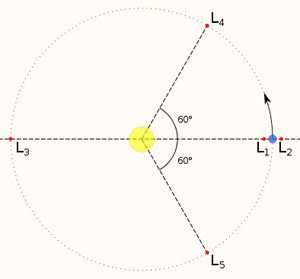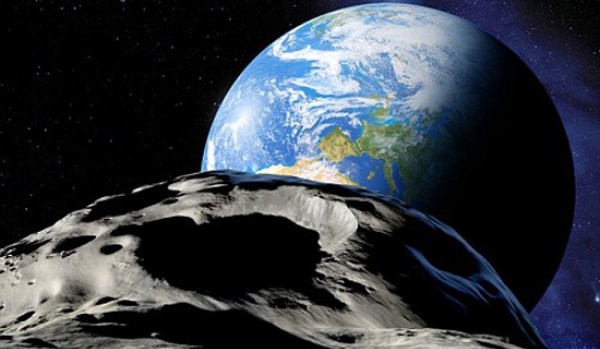There is an old saying that says “Everything has it’s shadows,” and planet Earth has a “shadow” per-say. In reality it’s an asteroid that more or less shares an orbit with the Earth. The asteroid is about 300 meters wide, and it’s the very first Earth Trojan Asteroid. Up till now, these little boogers were only a theory, but thanks to NASA’s Wide Field Infrared Survey Explorer or (WISE) that theory has become a reality.
The asteroid is called the Tk7 and is trailing behind the Earth about 50 million miles away, it’s actually pretty surprising we see it at all from that distance! because of the location of the asteroid, we can only see it during the day light. But thanks to WISE, we are able to see the asteroid in Infrared.
Okay, so I’m guessing the Asteroid would be inside the Habitable zone right?since it’s on the same orbit as the Earth, but still, scientist think that the rock is around the freezing point of water. Which makes me wonder… what really is the habitable zone?
 According to the scientist, if you have a large body like the Sun, and then you have a small “good size” object like the Earth, then there are some points in the orbit where if you place something, it’ll stay there without any problem. ONLY if it is placed on one of the 5 Lagrangian Points. Two of the 5 points have a pretty good stable field, meaning that if you put up a small object it’ll sit there even when you have something pushing it around a little. The way Discovery described it like a small dip in flat table. Put a marble there and it’ll stay put, even if you push it a little. It’ll fall back into place in the center of the dip. But, pushing stronger than the dip, will make it roll out of control. That dip is located at the L4 and the L5 points.
According to the scientist, if you have a large body like the Sun, and then you have a small “good size” object like the Earth, then there are some points in the orbit where if you place something, it’ll stay there without any problem. ONLY if it is placed on one of the 5 Lagrangian Points. Two of the 5 points have a pretty good stable field, meaning that if you put up a small object it’ll sit there even when you have something pushing it around a little. The way Discovery described it like a small dip in flat table. Put a marble there and it’ll stay put, even if you push it a little. It’ll fall back into place in the center of the dip. But, pushing stronger than the dip, will make it roll out of control. That dip is located at the L4 and the L5 points.
The other three points are stable as long as nothing perturbs it, using the same example as before, it would be like placing a marble on a flat surface, if you barely touch it, it will roll off the table.
So this Trojan asteroid is always at about the same distance, as the earth, and I thought “why not send humans to explore that rock and learn about it since it’s always there” but the only problem is that the asteroid is moving in a sideways “S” pattern, so every time they check the orbit, the asteroid is way to high above the Earth’s orbit, or way to low the earth’s orbit. This pattern makes putting a satellite on the asteroid extremely difficult. Landing a human, is even harder.





